- Tales
- The Barefoot Mailman
THE BAREFOOT MAILMAN
By Mike Miller September 6, 2024
South Florida was sparsely populated in the 1880s before roads, railroads, and the Intracoastal Waterway were built. There was no overland or water mail delivery from Palm Beach south.
In 1885, the U.S. Postal Service established a mail route from Palm Beach to Miami and back. It involved mail carriers on foot and rowboats.
The route was 68 miles each way making for a 136 mile round trip. The mail carriers became known later by the collective term "The Barefoot Mailman."
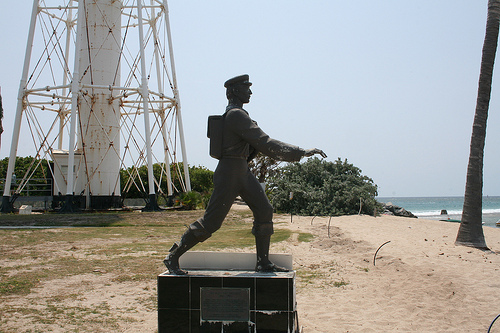 Statue of Barefoot Mailman at Hillsboro Inlet Lighthouse
Statue of Barefoot Mailman at Hillsboro Inlet LighthouseApproximately 56 miles of this round trip journey involved rowing boats down Lake Worth and across different inlets, while the rest was covered on foot, usually along the sandy beach.
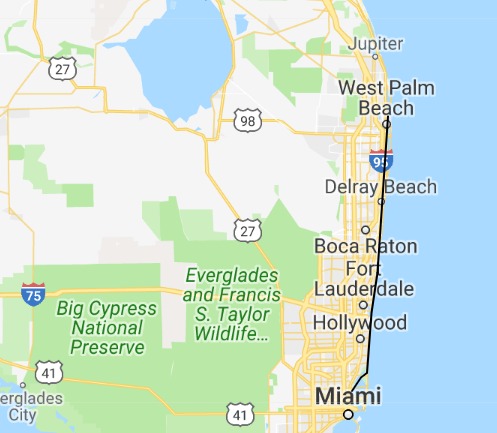 The Route of the Barefoot Mailman
The Route of the Barefoot MailmanThis mix of travel modes was required because of the lack of roads and the wet, swampy terrain that made overland travel impractical.
Mailmen would start their week in Palm Beach on Monday morning and row a boat to Hypoluxo Island near the southern end of Lake Worth.
From there he set off on a round-trip journey that would take him 6 days. The segments of his journey were:
Monday Night: After leaving Palm Beach in the morning, traveling by boat to the southern end of the Lake Worth Lagoon, crossing over to the beach, and walking down to what is now Delray Beach, he would spend the night at the Orange Grove House of Refuge.
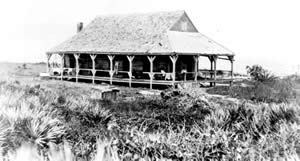 Orange Grove House of Refuge
Orange Grove House of RefugeTuesday Night: He would trek down the beach to Hillsboro Inlet and row across to the south side. From there he would walk on the beach to the Fort Lauderdale House of Refuge where he would spend the night.
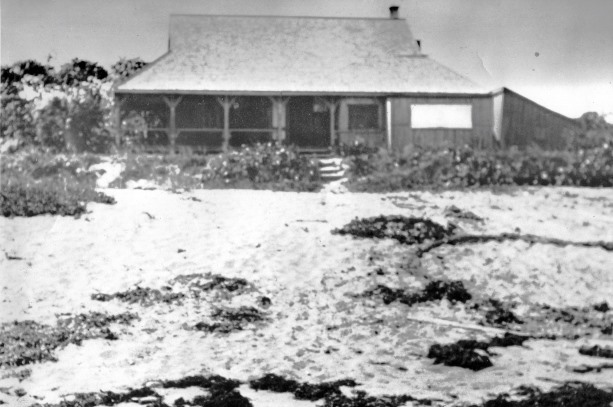 Fort Lauderdale House of Refuge
Fort Lauderdale House of RefugeThis house of refuge was located at New River Inlet, which no longer exists. It was near the present location of Bahia Mar resort. You can see the jetties that mark what used to be the inlet on the photo below.
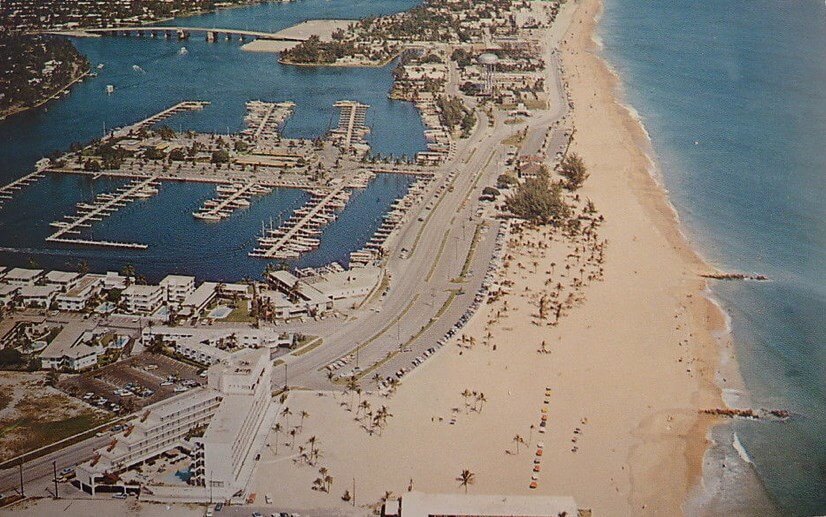 Bahia Mar and Ocean With New River Jetties
Bahia Mar and Ocean With New River JettiesWednesday Night: After crossing New River inlet he would walk down the beach to Baker's Haulover Inlet at the north end of Biscayne Bay. From there he would row across the bay and spend the night in Lemon City.
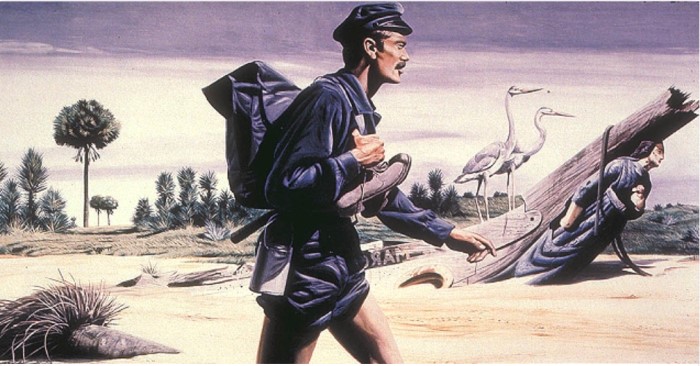 The Legend of James Edward Hamilton, Mail Carrier
The Legend of James Edward Hamilton, Mail CarrierMural by Stevan Dohanas at West Palm Beach Post Office
The route ended in Lemon City that is now the location of Miami's Little Haiti neighborhood near the 79th Street Causeway across Biscayne Bay.
He started heading back north on Thursday morning and if all went well got back to Palm Beach on Saturday evening.
This mail route was in operation between 1885 and 1893 and involved several mailmen over the years.
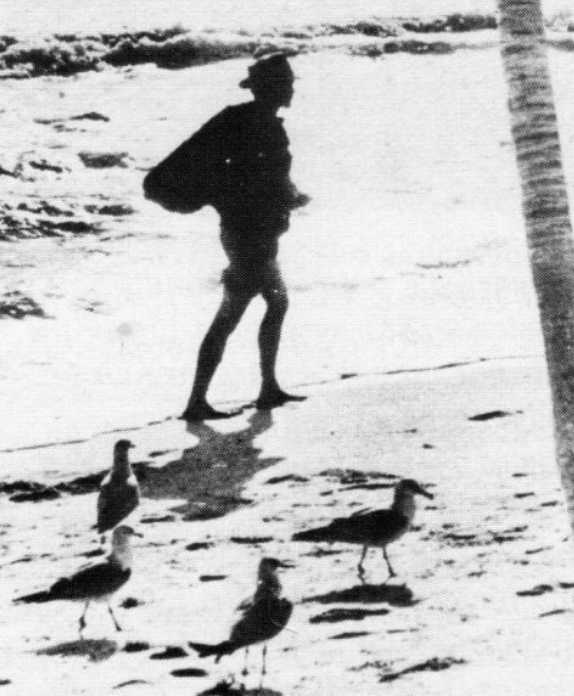 Barefoot Mailman
Barefoot MailmanBoca Raton Historical Society
One of the most memorable carriers is James Edward "Ed" Hamilton, who became a symbol of the Barefoot Mailman's endurance and peril.
On October 11, 1887, Hamilton vanished near Hillsboro Inlet. Apparently the boat that was supposed to be on the north side of the inlet was not there.
His mail pouch and clothes were later found on the north side of the inlet, and he likely had attempted to swim across the inlet to retrieve the boat.
His disappearance remains one of the route's most dramatic incidents, embodying the risks these mailmen faced. Nobody is sure who moved his boat, but I hope they suffered from a guilty conscience the rest of their life.
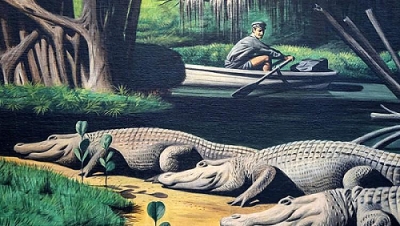 The Legend of James Edward Hamilton, Mail Carrier
The Legend of James Edward Hamilton, Mail CarrierMural by Stevan Dohanas at West Palm Beach Post Office
Another notable figure, Charles W. Pierce, was a former mail carrier who was instrumental in popularizing the term "Barefoot Mailman."
He used the term in 1939 during discussions with artist Stevan Dohanos, who was commissioned to paint murals of Hamilton for the West Palm Beach post office.
The Barefoot Mailman's legacy extends beyond mere postal delivery service. They've been immortalized in local lore, literature, and art.
Theodore Pratt's novel "The Barefoot Mailman" in 1943, loosely based on Hamilton's life, brought national attention to these carriers.
The route's end came with the construction of a wagon road from Lantana to Lemon City in 1893, marking the transition from pioneer days to the era of Henry Flagler's railroad extension and related developments.
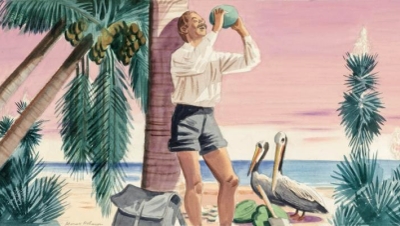 The Legend of James Edward Hamilton, Mail Carrier
The Legend of James Edward Hamilton, Mail CarrierMural by Stevan Dohanas at West Palm Beach Post Office
The story of the Barefoot Mailman is also honored in local pride, with Hypoluxo proudly displaying welcome signs referencing the mailmen, and a statue of Hamilton standing near the Hillsboro Inlet lighthouse.
The route's memory is kept alive through events like the annual beach hike by the South Florida Boy Scouts, known as the "Big Toe," where participants retrace parts of the original path, experiencing a fraction of the historical journey.
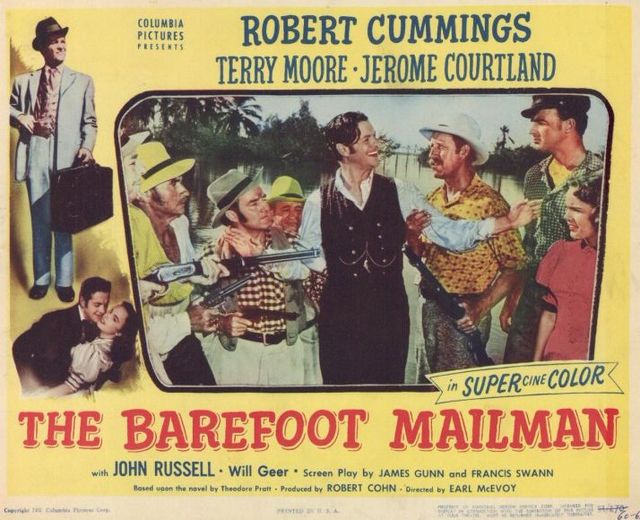
There was even a movie made in 1951 based very loosely on Theodore Pratt's novel. Starring Robert Cummings and Terry Moore, it's a fun movie to watch.
It has some great Florida beach and swamp scenes. Here is the link to the full movie: https://youtu.be/-2-ot8Bta6U
The murals shown in this article can be seen on the inside walls of the West Palm Beach Post Office at 3200 Summit Blvd., West Palm Beach, Florida 33416

Florida is the fastest-growing state in the United States and also the fastest-changing. If you see anything in this article that has changed or is in error, please let me know.
Thousands of Florida fans subscribe to our free daily Ezine, Florida Heritage Travel and we have 130,000 followers on Facebook.
By Mike Miller, Copyright 2009-2025
Florida-Back-Roads-Travel.com
Florida Back Roads Travel is not affiliated with or endorsed by Backroads, a California-based tour operator which arranges and conducts travel programs throughout the world.
